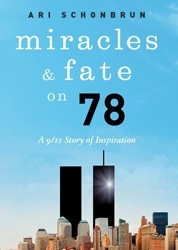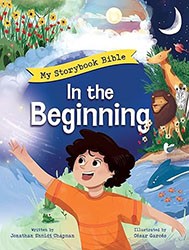Brighton Beach Bible gives bold meaning to the words “we were all at Sinai.” In sixty-four provocative and wildly imaginative paintings based loosely on biblical texts, Joel Silverstein — an artist with roots in science fiction, pop culture, and fine art — brings all the strands of his art and personal experience into the revelation at Sinai and how it has been passed from generation to generation.
Silverstein’s family and friends are featured in the Exodus story — the model for Moses is a high school friend whose T‑shirt has Michelangelo’s Moses emblazoned on it. The artist’s wife witnesses the miracle of the snakes at a beach, the New York skyline in the background. Silverstein incorporates the plagues, too: a mammoth frog appears against the background of the Coney Island Cyclone roller coaster; an odalisque in Abu Simbel is afflicted by boils; and a fierce figure stands over a pile of bodies, representing the slaying of the firstborn.
The cover painting, Brighton Exodus, combines a profusion of elements depicting themes from Silverstein’s life and art. In the foreground, there’s a crowd at the beach, and, slightly behind them, a gathering of Hasidic men, perhaps on their way to a wedding under the chuppah in front of an Egyptian building near the Cyclone.
Silverstein continues through the Bible, concentrating on the first five books and juxtaposing styles inspired by comic books, Greek and Roman statues, biblical and historical figures, and family members. Michelangelo’s Moses and Silverstein’s wife are both recurring figures, underscoring the centrality of religion and family.
Ori Soltes, a professor of civilization at Georgetown University, provides a layered narration, explaining both the biblical text and the way Silverstein uses his art to explore and expand it. Both are vital for fully understanding and appreciating Silverstein’s artistic autobiography.
Ambitious and audacious, Silverstein’s plunge into the waters of biblical commentary is part of an ongoing Jewish tradition of interpretation. He takes viewers on a path-breaking journey through religious art and Jewish commentary — a journey that may change the way we think about both.
Maron L. Waxman, retired editorial director, special projects, at the American Museum of Natural History, was also an editorial director at HarperCollins and Book-of-the-Month Club.





